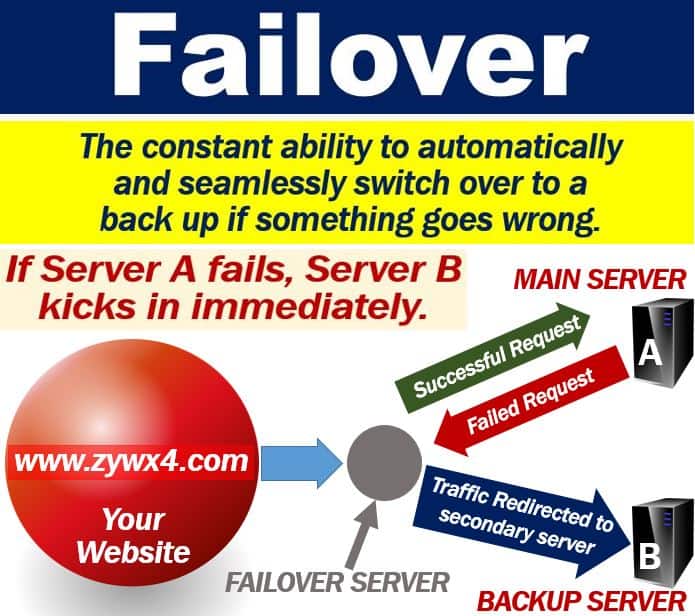Failover refers to the constant ability to immediately and seamlessly switch over to a backup if something goes wrong. If a machine or system has a failover mechanism, it can continue operating even if there is a malfunction. Failsafe is one of many jargon terms that exist in the world of computers and cybernetics.
Users do not notice that there has been a problem and that a backup system has taken over. They do not realize because the switching over to the backup occurs automatically and seamlessly.
In computing, there may be a system-wide failure due to, for example, a fire or server shutdown. A power outage may also cause a system-wide failure.
Failover is a process of switching to a backup or redundant system automatically when this happens.
Most firms have a failover
Most companies have a procedure in place in which their systems switch to a backup. In today’s digital marketplace, for example, having a service or website that ‘goes down’ could be the kiss of death.
To ‘go down,’ in this context, means to go offline unintentionally. If your website has gone down, it means that it has probably crashed and is offline, i.e., it’s inaccessible. We also use the term ‘downtime,’ as in: “Downtime is bad for business.”
The opposite of ‘offline’ is ‘online.’ The term ‘online’ refers to a state of connectivity, which in this context means connected to the Internet.
Retail stores, banks, production facilities, and hundreds of other types of businesses must have a failover mechanism in place. The Internet backup system might be located in another town, or even another country.

The image above shows how a website can remain online all the time, even when a server is down.
Computer Hope says the following regarding backup systems for online services:
“The failover system is a mirror image of the main system, so little or no data is lost.”
Automatic failover
In the world of computers and online communications, people often use the term ‘automatic failover.’
It is a resource that allows the systems administrator to switch data handling automatically to a standby system. Specifically, it does this when the system has a failure.
In this context, ‘automatic’ describes the process of switching over to a backup.
Regarding most backup systems in the world of computing, Techopedia says:
“By definition, most failover processes are programmed to operate automatically.”
Hospital generators
In most hospitals, if there is a power cut, backup generators kick in. Having a continuous supply of electrical power is crucial in hospitals. In fact, many human lives depend on it.
Hospitals are full of medical devices, monitoring equipment, and other machines. Many of them keep patients alive.
For example, some patients in a coma would not survive if their ventilator, i.e., their breathing device, failed.
Is the mechanism hospitals have a failover?
Some people would say that it is failover. They point out that medical devices continue working when there is a power outage. The backup generators automatically become active, and the electricity supply continues.
Others, on the other hand, might argue that the transition is sometimes not seamless. In many hospitals, the lights go out for a couple of seconds before the generators start working.
Sometimes the lights may dim slightly before the generators come on. This is not a seamless transition, they argue. With a seamless failover transition, most people would not know about the power outage.
Failover vs. fail-safe
Do not confuse the term with ‘fail-safe.’
A fail-safe is a mechanism that allows something to ‘fail safely.’ If something goes wrong with a machine or system, the fail-safe inherently responds. It responds in a way that causes no harm, or at least it minimizes the danger.
Lawnmowers, for example, have levers that the user must hold tight. If the user lets go, the machine stops. It is a type of ‘dead man’s switch.’ A dead man’s switch is a fail-safe mechanism.
Other terms with ‘fail’
There are many two-word terms that have ‘fail’ in them. For example, a ‘failed trade‘ occurs if the buyer or seller of a security fails to deliver the security or pay for it on time. ‘On time,’ in this context, means the settlement deadline.
A fail soft system is one that shuts down non-essential functions if there is a fault or breakdown. However, its primary functions still operate. This means that the user can still do basic things.
